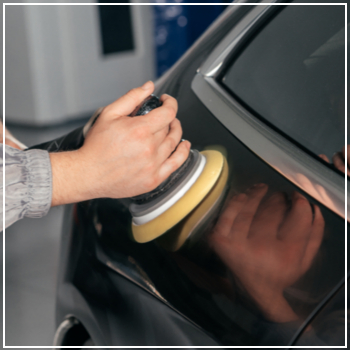Less Obvious Signs Your Car Has Started to Rust
 When you notice a small patch of rust on your car, it might feel like it appeared out of nowhere. But the truth is, rust doesn’t just happen by chance—it’s usually the result of moisture and exposed metal reacting over time.
When you notice a small patch of rust on your car, it might feel like it appeared out of nowhere. But the truth is, rust doesn’t just happen by chance—it’s usually the result of moisture and exposed metal reacting over time.
What many people don’t realize is that rust can start in hidden areas, such as under the car or beneath the paint. These early signs often go unnoticed until they become more visible or begin to affect your vehicle's performance. That’s why being proactive about identifying early warning signs is so important.
Here are some subtle indicators that your car may be starting to rust—and what you can do about it.
Bubbles in the Paint
If you see bubbles forming on your car’s paint, it could be a sign of trapped moisture or poor painting work. This often happens after a DIY repair or an inexperienced professional job. If the bubbles are clustered or widespread, it’s likely that water has seeped underneath the paint, leading to early-stage rust formation. At this point, the metal beneath the surface is already beginning to oxidize, even if you can’t see it yet.
Puddles of Water Inside the Car
Discovering puddles of water inside your car—whether in the cabin or trunk—is a red flag. This means moisture has found its way into areas where it shouldn’t be, often soaking through the carpet and pooling underneath. Over time, this moisture can cause hidden rust on the metal structures below. It could also mean that there’s a damaged seal or a leak allowing water to enter. Either way, the presence of water is a clear signal that corrosion is already starting.
Mismatched paint is common when buying a used car or after a repair. While it might seem like a simple touch-up, it can also be a sign of something more serious. If you notice color differences around doors, wheel wells, or other areas, it could mean that rust was covered up with a new coat of paint. Flaking or bubbling in these spots is a strong indicator that rust has already started to spread beneath the surface.
Debris and Moisture in the Engine
During the fall season, leaves, dirt, and other debris can easily accumulate under the hood. These materials can trap moisture, especially in areas without a protective clear coat. As a result, corrosion can develop quickly. If left unchecked, surface rust in these areas can spread to other parts of the engine, leading to more severe damage and costly repairs.
Winter brings its own set of challenges, especially with road salt. Salt can accelerate rust on the undercarriage and wheel wells. If you spot any signs of rust or corrosion, don’t ignore them. Contact DaSilva’s Auto Body for expert rust repair and rustproofing services. Whether you're dealing with hidden damage or need preventative care, we’re here to help keep your car in top condition. Reach out today to schedule an inspection or learn more about our services.
Hydraulic tank filters attach to tanks to keep fluid clean and free from debris, water, and air. Clean hydraulic fluid reduces contaminant buildup and maintenance costs and extends the working life of the system. Hydraulic tank desiccant breathers absorb moisture from the air as it enters a hydraulic tank, reservoir, container, or other hydraulic system component. Hydraulic tank fillers and breathers vent and filter air and moisture from tanks. Tank fillers also fill or top off hydraulic tanks as needed. Hydraulic tank suction strainers filter fluid before it leaves a hydraulic tank to enter the pump inlet line.
desiccant breather filter, Gearbox desiccant breather,desiccant breather cartridge,Hydraulic tank desiccant breathers
Xinxiang Zhike Machinery Equipment Co.Ltd , https://www.zhikefilter.com